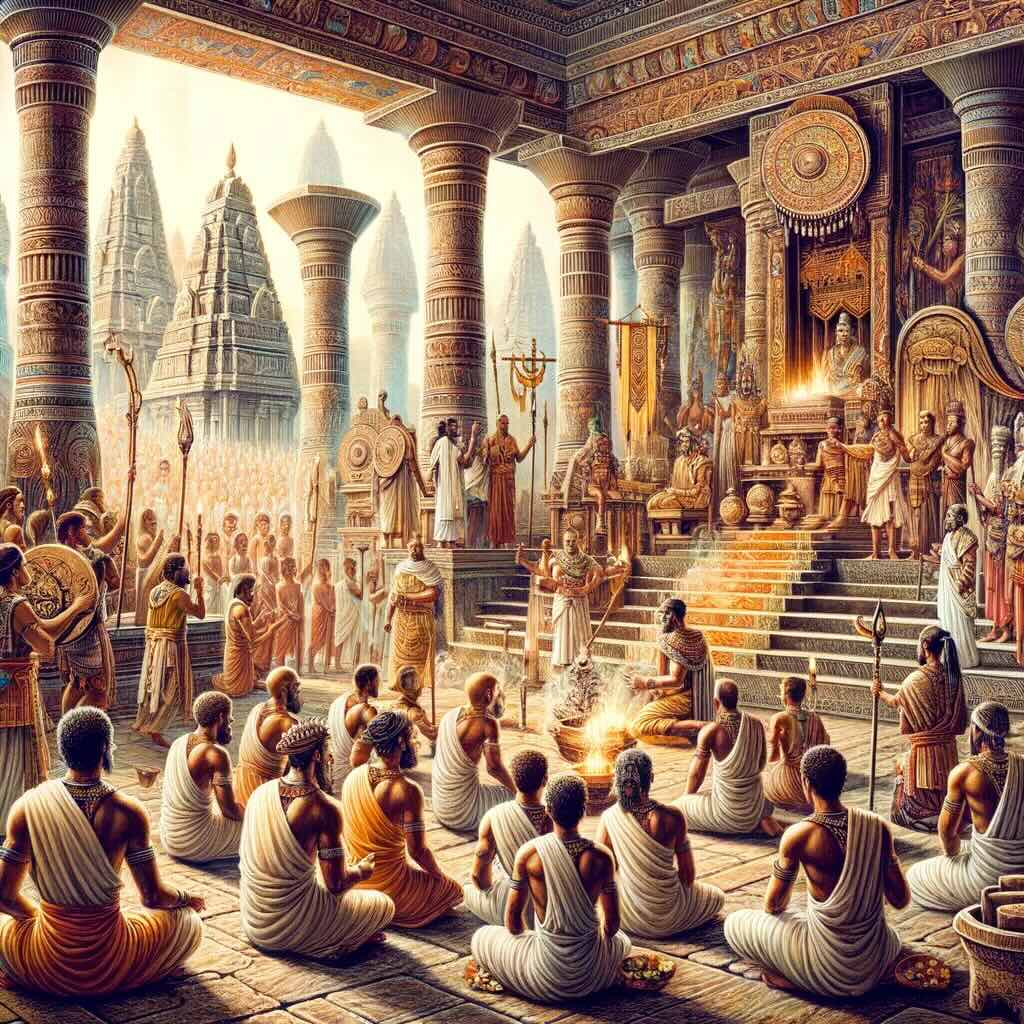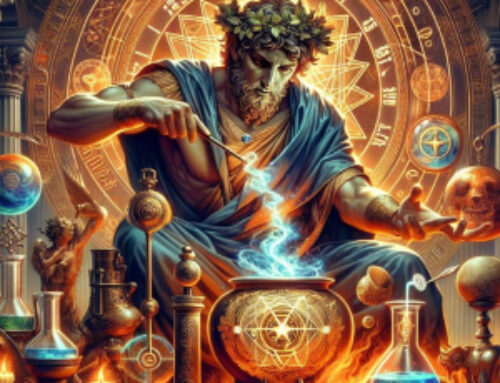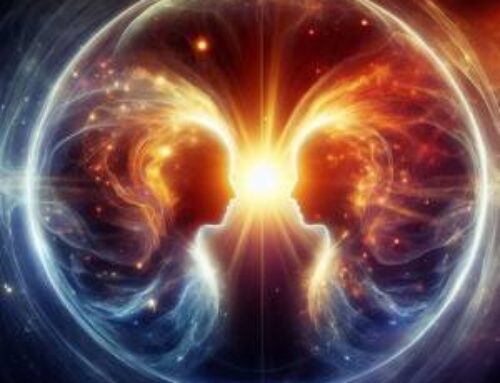Contents
Introduction
The Essence of Rituals
Rituals form the backbone of spiritual, religious an hermetic experiences across cultures and eras. These structured and often symbolic actions transcend mere tradition, weaving a rich tapestry that connects individuals to their community, history, and the divine. In its broadest sense, a ritual can be anything from a simple daily practice to elaborate ceremonial rites. The power of rituals lies in their ability to express complex ideas and emotions, often conveying messages and values that are integral to the cultural or religious fabric they belong to. Through rituals, the intangible is made tangible, and the mundane is transformed into something sacred.
Exploring Ritualism in Diverse Traditions
This article embarks on a journey to explore the depth and diversity of ritualism within three distinct but interconnected spheres: the Biblical rituals as described in both the Old and New Testaments, the core Christian rituals like the Eucharist, baptism, weddings, and funerals, and the enigmatic and often mystical rituals found in various mystery traditions.
Our exploration aims to uncover not just the external expressions and formats of these rituals but also to delve into their symbolic meanings, theological underpinnings, and the roles they play in individual and communal spiritual life. From ancient rites described in Biblical texts to the sacraments central to Christian worship and the secretive ceremonies of mystery religions, we will navigate through a fascinating array of practices that have shaped, and continue to shape, the spiritual landscape of countless individuals and communities around the world.

Part 1: Biblical Rituals
Old Testament Rituals: A Tapestry of Faith and Tradition
The Old Testament, a foundational text for both Judaism and Christianity, is rich with rituals that reflect the covenant between God and the people of Israel. These rituals range from daily practices to special annual ceremonies, each with deep religious and cultural significance. Some expamples:
- Shabbath Observance: A weekly day of rest and worship, the Sabbath is a cornerstone of Jewish life, emphasizing rest, family, and spiritual reflection.
- Passover (Pesach): This pivotal annual feast commemorates the Exodus from Egypt, celebrating liberation and divine protection.
- Feast of Unleavened Bread: Immediately following Passover, this week-long feast involves the eating of unleavened bread, commemorating the Israelites’ hasty departure from Egypt.
- Feast of Weeks (Shavuot): Celebrated seven weeks after Passover, this festival marks the giving of the Torah at Mount Sinai.
- Feast of Trumpets (Rosh Hashanah): This marks the beginning of the Jewish New Year, characterized by blowing the shofar (ram’s horn) and introspection.
- Day of Atonement (Yom Kippur): The holiest day of the Jewish year, it involves fasting and repentance, focusing on purification and reconciliation with God.
- Feast of Tabernacles (Sukkot): A week-long festival celebrating the Israelites’ 40-year journey in the wilderness and God’s provision.
- Sacrificial Rites: Detailed in Leviticus, these include burnt offerings, grain offerings, peace offerings, sin offerings, and guilt offerings, each with specific purposes and symbolism.
- Circumcision: The physical sign of the covenant between God and Abraham, performed on male infants on the eighth day after birth.
- Rites of Purification: Various rituals for purification, such as those after childbirth, for skin diseases, and for contact with the dead.
- Sotah (Ordeal of the Bitter Water): A ritual for a woman accused of adultery.
- Year of Jubilee: Celebrated every 50th year, it involved the release of all debts, slaves, and the restoration of property.
- Rituals for Kingship: Including anointing and other coronation practices.
Old Testament Rituals: The Framework of Jesus’ Life
The Old Testament rituals formed the backdrop of Jesus’ life and teachings, as He lived in a culture deeply rooted in these practices. These rituals, ranging from daily observances to annual feasts, were integral to the religious life of the Jewish people.
- Sabbath Observance: Jesus observed the Sabbath, as seen in numerous accounts where He teaches in synagogues on this day.
- Passover (Pesach): Central to Jewish life, this feast commemorated the Exodus. Jesus’ participation in the Passover is significant, especially as His Last Supper with the disciples was a Passover meal (Seder).
- [… Additional Old Testament rituals as previously listed …]
The Last Supper: A New Testament Ritual
In the context of the New Testament, the most explicitly mentioned ritual is the Last Supper, which Jesus shared with His disciples. This meal, which was a Passover Seder, became foundational to Christian worship as the institution of the Eucharist or Holy Communion. During the meal, Jesus reinterpreted elements of the Passover in the light of His impending death and resurrection, giving new meaning to the bread and the wine.
Jesus and Old Testament Rituals
It’s important to note that Jesus lived within the framework of these Old Testament rituals, respecting and often reinterpreting them. For example, while He challenged certain interpretations of the Sabbath, He never dismissed its observance. Similarly, His participation in the Passover meal and other Jewish feasts underscored His connection to the Jewish tradition. However, He often emphasized the spirit rather than the letter of the law in these practices, focusing on their deeper spiritual significance.
Part 2: Christian Rituals
The Eucharist: A Communal Celebration
The Eucharist, also known as Holy Communion, is a central ritual in Christian worship, originating from Jesus’ Last Supper with his disciples. This ritual varies significantly across Christian denominations in terms of its interpretation and practice. For some, it is a symbolic remembrance, while for others, it embodies a literal transformation. The format typically involves the breaking of bread and the sharing of wine, symbolizing the body and blood of Christ. The theological significance of this ritual is profound, encompassing themes of sacrifice, community, and spiritual nourishment.
Baptism: The Rite of Spiritual Birth
Baptism marks the initiation of an individual into the Christian faith. Its historical roots can be traced back to the practices of John the Baptist and the baptism of Jesus himself. Symbolically, baptism represents purification, rebirth, and the entry into a new life in Christ. Practices vary between infant baptism, common in Catholic and Orthodox traditions, and believer’s baptism, typically practiced in Protestant denominations. This ritual underscores the individual’s commitment to Christian values and is often seen as a foundational rite in a Christian’s spiritual journey.
Wedding Ceremonies: Union under God
Christian weddings blend spiritual solemnity with cultural traditions. While the format of these ceremonies can vary widely across cultures and denominations, they typically involve vows, the exchange of rings, and a pronouncement of marriage, often within a church setting. Scripturally, marriages are often linked to biblical teachings on love, commitment, and partnership. Christian weddings are not just a celebration of the union between two individuals but are also seen as a covenant made before God and the community.
Funerals: A Farewell with Hope
Christian funerals serve as both a mourning of loss and a celebration of the deceased’s life and journey to the afterlife. These rituals often include readings from scripture, hymns, a sermon, and prayers. The format can vary, but the underlying purpose remains: to offer comfort to the bereaved and to honor the belief in eternal life. Funerals in Christianity play a critical role in providing closure and reinforcing faith in the face of death.
A Note on the Role of Christian Priests
Interestingly, the concept of a Christian priest, as known today, is a development that evolved over time. In the early Christian community and the New Testament, there is no explicit explanation or role defined for a ‘Christian priest’ in the way it is understood today. The rituals described in the Bible and the early Christian practices did not necessitate a distinct clerical class. The role of the priest, as a mediator and leader of these rituals, emerged as a development by early Christian sects, reflecting an organizational need as the religion grew and structured itself. They copied the mystery tradition without, however, having an initiatory background.
Part 3: Rituals in Mystery Traditions
Overview of Mystery Traditions
Mystery traditions, often shrouded in secrecy and symbolism, represent a fascinating aspect of spiritual history. These traditions, found in various ancient cultures including Greek, Roman, and Egyptian, are characterized by their initiatory nature and the promise of deeper spiritual knowledge and transformation. Unlike mainstream religious practices of the time, mystery traditions were not open to all; instead, they required a process of hermetic initiation and often involved a series of progressive revelations. The core of these traditions lay in experiencing the divine or profound truths directly, typically through ritualistic means.
Initiation Rituals: The Gateway to Mysteries
Initiation rituals in these traditions were not just formalities but transformative experiences, marking a departure from the mundane world into a realm of heightened spiritual awareness. These hermetic rituals often involved symbolic death and rebirth, signifying the initiate’s transformation. Common elements included:
- Secrecy: The rituals and their meanings were closely guarded, revealed only to initiates.
- Symbolic Journey: Many initiation rituals mimicked a journey, often through darkness to light, symbolizing spiritual awakening.
- Trials and Challenges: Initiates might undergo tests or face challenges, meant to prove their readiness and commitment.
- Revelation of Sacred Knowledge: Upon successful completion of the initiation, esoteric knowledge was imparted to the initiate.
Priest Consecration in Mystery Traditions
Becoming a priest or a key figure in mystery traditions was a profound commitment, often requiring an extensive and rigorous initiation process. The consecration rituals in these traditions were deeply esoteric, involving:
- Advanced Initiations: Going beyond the initial rites, these rituals were more complex and profound, often reserved for those who had demonstrated deep understanding and unwavering dedication.
- Ceremonial Vestments and Symbols: The use of specific garments and symbols was common, each with esoteric meanings and representing the priest’s elevated status.
- Ritual Expertise: Priests were expected to have a comprehensive understanding of the rituals, able to lead and guide others through them.
- Guardianship of Sacred Knowledge: Priests often became custodians of the tradition’s mysteries, responsible for preserving and passing on esoteric teachings.
Comparative Analysis
Common Themes Across Rituals
Despite the diverse contexts and purposes of the rituals in the Old Testament, Christian traditions, and mystery traditions, several common themes emerge:
- Symbolism: In all these traditions, rituals are rich in symbolism, serving as a bridge between the physical and the spiritual, the human and the divine.
- Community: Whether it’s the communal celebration of the Eucharist, the Jewish Passover, or the shared experience of initiation in mystery traditions, rituals often strengthen community bonds and shared identity, as long as the rituals are authentic and the inner conscious connection to the divine is present, which is more than doubtful with exoteric religions.
- Transformation: Across these practices, a theme of transformation is prevalent, whether it’s spiritual rebirth in baptism, the soul’s journey in mystery rites, or moral and spiritual reflection during Yom Kippur.
Distinctive Aspects of Each Tradition
While sharing common themes, each tradition’s rituals have unique aspects:
- Theology: Old Testament rituals are deeply intertwined with Jewish law and covenant theology, while Christian rituals reflect the themes of grace, redemption, and personal relationship with God. Mystery traditions, on the other hand, often focus on personal enlightenment and esoteric knowledge.
- Cultural Context: The rituals in the Old Testament reflect the history and culture of ancient Israel. Christian rituals, while rooted in Jewish traditions, evolved to encompass a broader cultural context as Christianity spread. Mystery traditions were often specific to certain cultures and eras, reflecting local beliefs and practices.
- Purpose: Old Testament rituals often served to maintain covenantal relationship with God and communal purity. Christian rituals emphasize personal salvation and community in Christ. The churches have turned biblical family rituals and family celebrations into priestly rituals to strengthen their influence and control over their followers. Mystery traditions, with their secretive and initiatory nature, aimed at personal spiritual transformation and enlightenment.
Conclusion
Summary of Key Points
This exploration of rituals across different traditions highlights their multifaceted roles in human spirituality. From the communal and law-bound rituals of the Old Testament to the transformative and personal sacraments in Christianity, and the secretive, enlightening practices of mystery traditions, each set of rituals enriches our understanding of the human quest for the divine.
The Enduring Impact of Rituals
Rituals continue to play a vital role in religious and spiritual life, offering structure, meaning, and a sense of belonging. They connect individuals not only to their faith but also to their community and history. In a rapidly changing modern world, these rituals serve as anchors, providing continuity with the past and a framework for navigating the complexities of contemporary life. By understanding the origins, evolution, and meanings of these rituals, we gain deeper insights into our own spiritual journeys and the collective human search for meaning and connection.
If this journey through the ancient and mystical world of rituals has sparked your interest, then the Hermetic Academy awaits you. Dive deeper into the esoteric and spiritual teachings that have shaped centuries of seekers. At the Hermetic Academy, we offer courses, resources, and a community of like-minded individuals eager to explore the mysteries of the ancient world. Join us to continue your journey into the profound depths of spiritual wisdom and understanding. Enroll now and be part of a tradition that transcends time and space.





